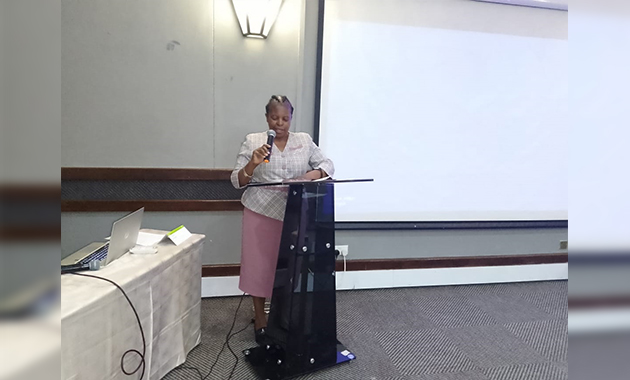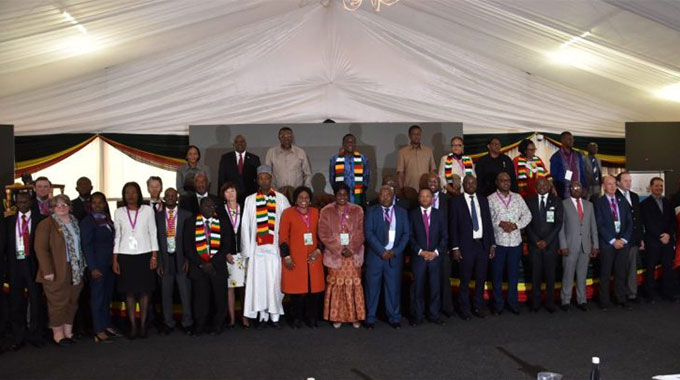Geologist quits job to focus on farming
He had won a scholarship in a programme that allowed him to take his immediate family along with him with the sponsor meeting all the expenses.
After successfully completing his four years of hard studying, he looked for a job and started working as a geologist at one of the country’s leading mines.
It was quite a rewarding period for him materially but there was one thing that bothered him every day — there was no land to grow a few crops or even start a small backyard garden. He was in love with farming but he could not do it here.
“I think it’s about time we returned to Zimbabwe. They have done a land redistribution programme there and everyone now has the potential to fully express their different capacities in either crop or animal production,” he told his wife Susan one frosty morning.
Knowing the husband’s passion for agriculture, as he had demonstrated back home, Susan knew she would not win the case even if she were to contest the decision. Gundani had made up his mind and that was final. He soon made his intentions apparent to his employers who pleaded with him not to leave as he was only at the prime of his career. But the lure of another romance with the soil was irresistible to this native of Zimbabwe who was born and nurtured in the Hurungwe communal lands of Mashonaland West.
Gundani was born into a farming family that survived on agriculture and his father, a no nonsense character had groomed him into an individual who believed everything about survival came from the land hence his choice to study minerals and work for a mine after that.
He was sure he would find some vast acres of land back home on which to start a project of his own-probably even introduce some irrigation using the resources he had accumulated in his years of expatriate service. Gundani and his family packed their bags and were soon on their way home. But that was only after they had seen the shipment of the bulk of their belongings that included a tractor and several pieces of agricultural implements that he intended to use once he had landed in Zimbabwe.
He was very excited despite hearing of numerous stories on how the continent, Zimbabwe included had fallen from grace to abject poverty under the onslaught of unruly weather orchestrated by global warming, the economic recession and in some cases man-made crises like civil wars.
Gundani only hoped this would not be true of his country. On arrival, he noticed that true to the stories he had been hearing, there had been monumental changes climatically, economically, socially and politically in his homeland and these had left an indelible mark on the lives of the people. He was a disillusioned man.
But he had to do something. He had convinced himself that not all was lost. There had to be a way. The farmers, service providers, industry and the Government were to be the key players in this game of change and economic rejuvenation.
For sure years of deprivation, unruly weather patterns, wars and troubled economies had seen the African continent slowly gliding into the abyss of poverty and comfortably filling one of the slots in the ranks of the world’s poorest economies. And this downward trend had sucked in the majority of the continent’s countries that also include Zimbabwe.
Gundani observed that his beloved Zimbabwe had moved from a country of plenty — commonly dubbed the “Breadbasket of Africa” to a hungry, malnourished, impoverished and disillusioned country.
The country is now 30 years old while its land re-distribution programme is now about 10 years old. There are more questions than answers on the future of agriculture in the country. What is the position of Zimbabwe with regard to agricultural productivity with the rest of the world?
And those who knew Zimbabwe just a few years down the line may be forgiven for asking questions like- what did historical figures show about Zimbabwe’s output in the Sadc region 20 years ago? What are the challenges today? Are there better agricultural prospects for the future?
What is the policy making structure? What is the level of stakeholder participation? Are policy makers aware of the prime movers of agricultural development?
Obviously, many people will agree on the need for the country to embark on aggressive research and development programmes and speedily adopt improved seed varieties and breeds while investing heavily in human capital in the form of technical skills and professionals.
There is also glaring need for infrastructural development and capital investment coupled by efficient marketing and credit institutions, a process during which players in the sector must unravel the mysteries in farming and mobilise farmers to stop pretending things are normal when they are not.
Land is the best tool through which people can be empowered and in the case of Zimbabwe, that stage had already been accounted for in the land reform programme, Gundani noted.
But the biggest question is that now that people have land, are they using it productively? How can they improve their current models of production and attain full commercialisation of farming in the country?
Gundani wondered when the country would once again start producing the record 140 million litres of milk that it used to produce in the years gone by.
He gathered that the national dairy herd was currently around 22 000 versus a herd size of 192 000 cows in 1991. The national beef herd was also seriously dwindling. The national average off-take was 3,4 percent and the target for national off-take for both the local and export was 10 percent.
The information he got from auction sales indicated that most farmers were disposing poor quality animals such that super and choice meat grades continue to be in short supply.
Statistics also have it that calving rates are generally low with the national average calving rate being recorded at 32 percent yet the optimum calving rate should be above 65 percent.
The country was also battling to fill it silos against an estimated national cereal deficit of about 186 000 metric tons due to a number of challenges. This obviously had a negative effect on allocation of the limited resources the economy has.
And to Gundani, not all is lost. Up to this day he firmly believes that only the collaboration of most of the stakeholders in the agriculture sector discussing and dissecting issues of concern to their trade may be the answer to reviving the country’s agricultural industry.












Comments